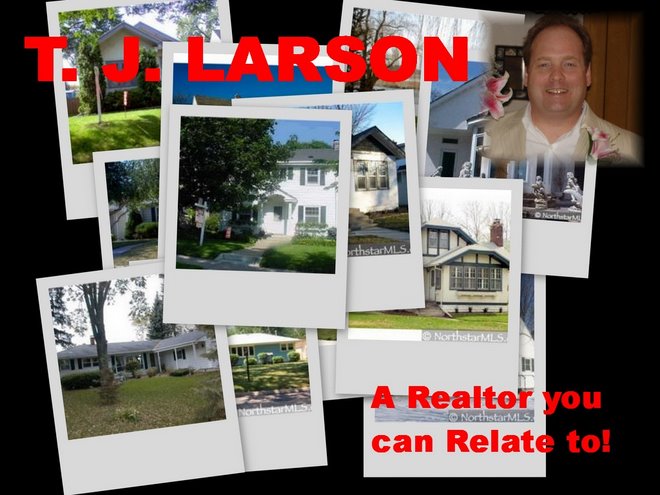Here's the latest from Kenneth Harney of the Washington Post:
Rush to refinance makes sense for some borrowers
Attractively low mortgage rates mean it might be time to refinance -- if you fall into one of several categories of homeowners.
By Kenneth Harney, Washington Post Writers Group
You might be thinking Christmas, Hanukkah, Kwanzaa and sugarplums, but thousands of your fellow homeowners have been thinking refinancings, rate reductions, cash-outs and money-saving debt consolidations.
For the past two weeks they've been bombarding lenders with applications for mortgage refinancing -- driven by the most attractive rates in the marketplace in more than a year. Refinancings were up in mid-December by 60 percent over the same period last year, and they accounted for more than half of all new home mortgage applications -- the highest since the spring of 2004.
Thirty-year fixed rates slipped below 6 percent two weeks ago, and although they've rebounded slightly, they are still nearly a percentage point below where they were last summer. Fifteen-year fixed-rate loans in the mid-to-upper-5-percent range are readily available to applicants with solid credit.
Could a holiday season refinancing be in the cards for you? Maybe, but it probably depends on whether you fit into one of several categories where today's rates make a lot of sense:
• You have an adjustable-rate mortgage that's facing a "reset" into higher payments in the six months ahead. Your loan might be a payment-option mortgage, an interest-only mortgage originated in 2003 or 2004 with a three-year reset, or simply an adjustable tied to sort-term Treasury rates that's already costing you more than the fixed-rate alternatives.
• You have a "piggyback" first and second mortgage package that was originally intended to let you purchase your house with a minimal or zero down payment while avoiding mortgage insurance premiums. But now the floating-rate second is above 8 percent and you want to bail.
• You need cash for a home improvement project, a business investment or to buy a vacation home that's now available at a bargain price. Even though the fixed rate on your first is below 6 percent, the opportunity to cash out thousands of dollars and refinance into a larger replacement first percent is compelling.
So many current homeowners fit into these categories that Anthony Hsieh, president of LendingTree.com, the online network of 200-plus mortgage companies, predicts that this month's refinancing boomlet could stretch into 2007 -- provided, of course, that rates remain close to 6 percent.
"This [boom] has legs," he said. "This is no head fake, it's for real" because mortgage money at 6 percent offers such exceptional problem-solving opportunities.
For example, Douglas Duncan, chief economist for the Mortgage Bankers Association of America, estimates that $1.1 trillion to $1.7 trillion of adjustable-rate mortgages are scheduled for payment resets in the coming 12 months, and that $600 billion to $700 billion is likely to be refinanced by homeowners eager to avoid higher monthly outlays.
Some of these loans are "nontraditional" mortgages that combine low initial payment periods with drastically higher payments after several years. For thousands of those borrowers facing big payment jumps -- 50 to 100 percent and even higher -- a refinancing into a fixed-rate mortgage is a no-brainer, according to Duncan.
Other people who purchased during the housing boom years using popular "3/1" adjustables in the mid-4-percent range for the initial three years now face significantly higher payments because short-term interest rates today are much higher.
Consider this example provided by LendingTree: Say you bought your house in late 2003 with a $200,000 "3/1" adjustable at 4.375 percent with a margin of 3.75 percent and a 20 percent down payment. Your principal and interest payments have been $998.57 for the first three years. But now you face a reset into a 7.53 percent rate on your $197,000 balance -- and a monthly payment hike of $383.
Your heads-up alternative: Refinance into a new 30-year fixed-rate $197,000 mortgage at 6.1 percent. Sure, your payment will be $196 higher than your current 4.375 percent rate, but not what you'd pay if you stuck with your current loan's post-reset rate.
Here's another scenario: Say you have a great rate on the $200,000 first mortgage that you took out in 2002 -- 5.5 percent. But you need $25,000 cash for a kitchen remodeling or business investment. On the one hand, you hate to get rid of a once-in-a-lifetime 5.5 percent rate. On the other hand, you have the opportunity to pull out the $25,000 with a refinancing, add it to the $192,500 balance on your current loan, and walk away with a new $217,500 replacement mortgage at 6.1 percent fixed for 30 years.
Your new monthly payment: About $184 higher than your current.
A Christmas gift from Santa? Hardly. Cash-out refinancing costs money. But your 6.1 percent fixed rate -- not far above 40-year record lows -- should still look good years from now.
Saturday, December 23, 2006
Subscribe to:
Post Comments (Atom)


No comments:
Post a Comment